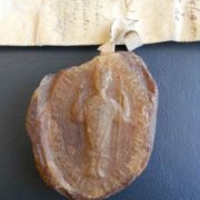Papers by Juan Ignacio Cuadrado Iglesias
El Siglo De Las Luces De La Industria Al Ambito Agroforestal 2005 Isbn 84 7820 816 X Pags 131 181, 2005
... Siglo de las luces : de la industria al ámbito agroforestal / coord. por Manuel Silva Suárez,... more ... Siglo de las luces : de la industria al ámbito agroforestal / coord. por Manuel Silva Suárez, 2005, ISBN 84-7820-816-X , pags. 131-181. © 2001-2010 Universidad de La Rioja · Todos los derechos reservados. XHTML 1.0; UTF‑8.
Volume 2: 30th Annual Mechanisms and Robotics Conference, Parts A and B, 2006
Agustin Betancourt: An Early Modern Scientist and Engineer in TMM. [ASME Conference Proceedings 2... more Agustin Betancourt: An Early Modern Scientist and Engineer in TMM. [ASME Conference Proceedings 2006, 301 (2006)]. Olga Erogova, Marco Ceccarelli, Juan Ignacio Cuadrado Iglesias, Carlos S. Lopez-Cajun, Vladimir E. Pavlov. Abstract. ...
Robotica, 1996
... planning of manipulators Marco Ceccarelli,* Francisco Valero,t Vicente Mata,t and Ignacio Cua... more ... planning of manipulators Marco Ceccarelli,* Francisco Valero,t Vicente Mata,t and Ignacio Cuadradot ... Particularly, a rigid body condition for a link / can be expressed as \PoPi-t-PoPi\~ h (1) where |-| is the module operator for vectors and 1, is the link length. ...
Mechanism and Machine Theory, 2002
A method for solving the complete dynamic problem in robots with rigid links and ideal joints usi... more A method for solving the complete dynamic problem in robots with rigid links and ideal joints using the Gibbs-Appell equations as starting point is presented. The inverse dynamic problem is solved through a algorithm OðnÞ, where tensor notation is used. The terms of the generalized inertia matrix are calculated by means of the Hessian of the Gibbs function with respect to generalized accelerations, and a recursive algorithm of order Oðn 2 Þ is developed. Proposed algorithms are computationally efficient for serial-robots with moderately large numbers of joints. The numerical stability of the proposed algorithms is analyzed and compared with those of other methods by the use of numerical examples. Ó 2002 Elsevier Science Ltd. All rights reserved.

Industrial Robot: An International Journal, 2012
ABSTRACT Purpose – The purpose of this paper is to analyze the impact of the torque, power, jerk ... more ABSTRACT Purpose – The purpose of this paper is to analyze the impact of the torque, power, jerk and energy consumed constraints on the generation of minimum time collision-free trajectories for industrial robots in a complex environment. Design/methodology/approach – An algorithm is presented in which the trajectory is generated under real working constraints (specifically torque, power, jerk and energy consumed). It also takes into account the presence of obstacles (to avoid collisions) and the dynamics of the robotic system. The method solves an optimization problem to find the minimum time trajectory to perform the tasks the robot should do. Findings – Important conclusions have been reached when solving the trajectory planning problem related to the value of the torque, power, jerk and energy consumed and the relationship between them, therefore enabling the user to choose the most efficient way of working depending on which parameter he is most interested in optimizing. From the examples solved the authors have found the relationship between the maximum and minimum values of the parameters studied. Research limitations/implications – This new approach tries to model the real behaviour of the actuators in order to be able to upgrade the trajectory quality, so a lot of work has to be done in this field. Practical implications – The algorithm solves the trajectory planning problem for any industrial robot and the real characteristics of the actuators are taken into account, which is essential to improve the performance of it. Originality/value – This new tool enables the performance of the robot to be improved by combining adequately the values of the mentioned parameters (torque, power, jerk and consumed energy).











Uploads
Papers by Juan Ignacio Cuadrado Iglesias